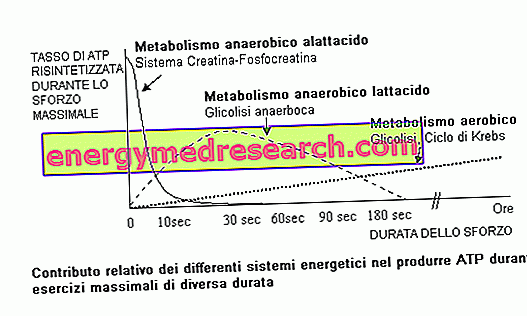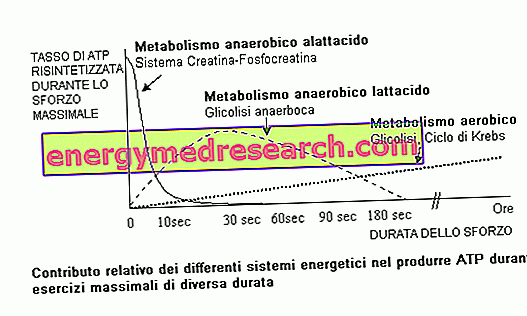What is lactate anaerobic metabolism? The anaerobic lactacid metabolism is a cellular "physiological mechanism" responsible for the production of energy with the exception of the use of oxygen and creatine-phosphate (CP); this energy system is in fact capable of producing ATP (Adenosin Tri Phosphate) in an ANAerobic environment by activating anaerobic GLYCOLYSIS (using glucose and NOT other substrates)
Category physiology of training
By Dr. Luca Franzon Lactic acid and muscle soreness Let's start with debunking some myths about lactic acid. The pain that is felt at the muscular level twenty-four or forty-eight hours post workout is absolutely not due to the accumulation of lactic acid. As the disposal of lactic acid occurs in thirty minutes if I do a restoration in operation or a cool down, or in an hour if I do not cool down
The Heart: Outline of Anatomy and Physiology The heart is a muscle with an average weight of about 350 g in humans and 300 g. in the woman. It is located in the center of the chest with the tip or apex directed forward and to the left. It consists of 4 cavities (or chambers), 2 atria and 2 ventricles, respectively atrium and right ventricle, atrium and left ventricle
Going from a resting condition to an intense exercise the cardiac output (given by the product of the systolic range for the heart rate) can increase by five times. The figure shows the distribution of blood to the various organs at rest and under stress. Note the large percentage of blood that is conveyed to the muscles during intense exercise (80-85%)
Watch the video X Watch the video on youtube What is lactic acid Lactic acid or lactate is a by-product of the lactic acid anaerobic metabolism. It is a compound toxic to cells, whose accumulation in the blood stream correlates to the appearance of the so-called muscle fatigue. Lactate is already produced starting from low intensity of exercise; the red blood cells, for example, form it continuously, even in conditions of complete rest
Bad for muscles? Whether they assail us after a long period of inactivity or after a very intense effort pain and muscle stiffening are feelings that we have all experienced at least once in a lifetime. We often tend to play down by attributing the soreness of the muscles to too much fatigue and to the excessive accumulation of lactic acid
The red fibers naturally constitute ALL the muscles of the body MA in EXTREMELY VARIABLE percentages between them. They are predominant in the muscles responsible for mild and repeated (long-lasting) efforts, also known as tonic-postural muscles. The red ones are not the preferred fibers in Body Building training but their more or less marked presence significantly affects the training technique to be used
The anatomical sites such as fatigue sites and the related physiological mechanisms involved have long been identified; on an experimental basis, fatigue was differentiated into CENTRAL and PERIPHERAL. CENTRAL when it is attributable to mechanisms originating in the central nervous system (CNS), or in all those cortical and subcortical nerve structures whose tasks range from the conception of movement to conduction of the nerve impulse up to the spinal motor neuron
Definition and types of resistant force Resistance is the body's ability to withstand a long-term workload. The resisting force can be classified into: Resistance to speed or speed, which lasts from 10 "to 35" Resistant force of short duration, which lasts from 35 "to 2" Resistant force of medium duration, lasting from 2 to 10 minutes Long-lasting resistant force: - 1st type 10-35 ' - 2nd type 35-90 ' - 3rd type 90-360 ' - 4th type> 360 ' Resistant strength and metabolism Not all types of resistant force require the same metabolic requirements; the res
What is lactate anaerobic metabolism? The anaerobic lactacid metabolism is a cellular "physiological mechanism" responsible for the production of energy with the exception of the use of oxygen and creatine-phosphate (CP); this energy system is in fact capable of producing ATP (Adenosin Tri Phosphate) in an ANAerobic environment by activating anaerobic GLYCOLYSIS (using glucose and NOT other substrates)
What is the ALAttacido anaerobic metabolism? The anaerobic metabolism of ALAttacido is a method of energy production, typical of muscle tissue, which does not involve the use of oxygen and does NOT produce lactic acid; it uses the creatine phosphate substrate (CP) and is able to work fully for only a few seconds









